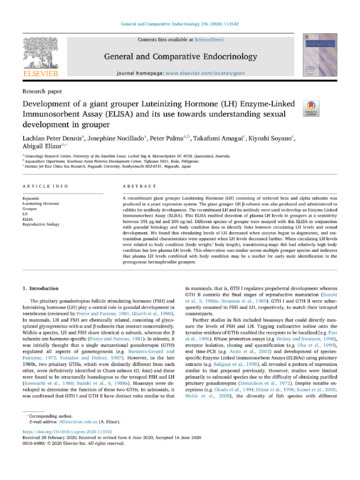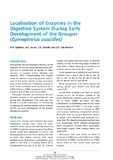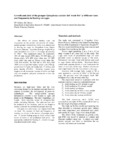Survival of yolk-sac larvae of grouper (Epinephelus suillus) under simulated transport conditions.
- Global styles
- MLA
- Vancouver
- Elsevier - Harvard
- APA
- Help
View/
Date
1991Page views
3,704ASFA keyword
AGROVOC keyword
Taxonomic term
Metadata
Show full item record
Share
Abstract
Transport of live fish is a routine activity in aquaculture. Various transport techniques have been reported by Berka. Transport of grouper eggs (Epinephelus suillus) between fisheries stations in Thailand is being conducted. However, no report has been made on transport of yolk-sac larvae of this fish. In the Philippines transport of eggs poses difficulties, particularly for hatcheries which are distant from the broodstock rearing site since spawning occurs between 1600 and 1800 h. Eggs can only be collected the following morning and hatching starts around 1200-1300 h (20 h after fertilization). Thus it seems advisable to transport yolk-sac larvae rather than eggs of grouper under such conditions. This study was conducted to determine the feasibility and optimum loading density of transporting grouper yolk-sac larvae for about 2 h.
Type
Conference paperCollections
- Conference Proceedings [298]
Related items
Showing items related by title, author, creator and subject.
-
Development of a giant grouper Luteinizing Hormone (LH) Enzyme-Linked Immunosorbent Assay (ELISA) and its use towards understanding sexual development in grouper
Peter Dennis, Lachlan; Nocillado, Josephine; Palma, Peter ; Amagai, Takafumi; Soyano, Kiyoshi; Elizur, Abigail (Elsevier, 2020-07-13)
A recombinant giant grouper Luteinizing Hormone (LH) consisting of tethered beta and alpha subunits was produced in a yeast expression system. The giant grouper LH β-subunit was also produced and administered to rabbits ...
; Amagai, Takafumi; Soyano, Kiyoshi; Elizur, Abigail (Elsevier, 2020-07-13)
A recombinant giant grouper Luteinizing Hormone (LH) consisting of tethered beta and alpha subunits was produced in a yeast expression system. The giant grouper LH β-subunit was also produced and administered to rabbits ... -
Series: ACIAR Monograph 110
Localisation of enzymes in the digestive system during early development of the grouper (Epinephelus coioides)
Quinitio, Gerald F.; Sa-an, Analyn C.; Toledo, Joebert D.; Tan-Fermin, Josefa D. (Australian Centre for International Agricultural Research, 2004)This study was undertaken to investigate the occurrence of some digestive enzymes in the gastrointestinal tract during early development in the grouper. This work was conducted to provide information on formulating an ... -
Growth and yield of the grouper Epinephelus coioides fed 'trash fish' at different rates and frequencies in floating net cages
Galzote, G. V.; Abrera, E. C. (Bureau of Agricultural Research, Department of Agriculture, 2007)The effects of various feeding rates and frequencies on the growth and survival of orangespotted grouper Epinephelus coides were determined in floating net cages in Tiniguiban Cove, Puerto Princesa, Palawan. Juveniles ...





